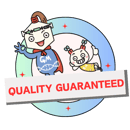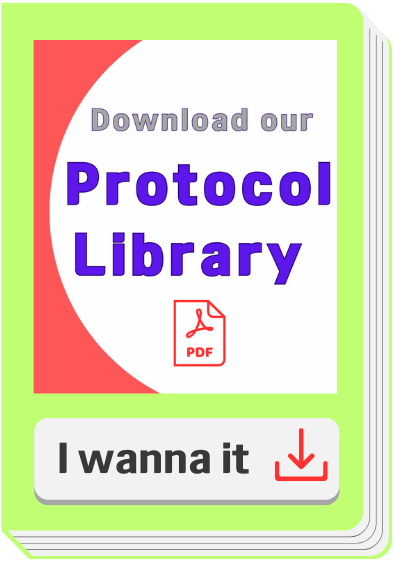Rotavirus antibody and antigen (recombinant protein)
Diagnostic anti-Rotavirus antibodies pairs and antigen for animal health (animal Ovines/Sheep infectious disease gastroenteritis) testing in ELISA, colloidal gold-based Lateral flow immunoassay (LFIA), CLIA, TINIA and POCT
 Go to Ruminants disease testing products collection
>>
Go to Ruminants disease testing products collection
>>
Product information
| Catalog No. | Description | US $ Price (per mg) |
|---|---|---|
| GMP-VT-P052-Ag01 | Recombinant Rotavirus protein | $3090.00 |
| GMP-VT-P052-Ab01 | Anti-Rotavirus mouse monoclonal antibody (mAb) | $3090.00 |
| GMP-VT-P052-Ab02 | Anti-Rotavirus mouse monoclonal antibody (mAb) | $3090.00 |
Size: 1mg | 10mg | 100mg
Product Description
| Cat No. | GMP-VT-P052-Ag01 |
| Product Name | Recombinant Rotavirus protein |
| Pathogen | Rotavirus |
| Expression platform | E.coli |
| Isotypes | Recombinant Antigen |
| Bioactivity validation | Anti-Rotavirus antibodies binding, Immunogen in Sandwich Elisa, lateral-flow tests, and other immunoassays as control material in Rotavirus level test of animal Ovines/Sheep infectious disease with gastroenteritis. |
| Tag | His | Product description | Recombinant Rotavirus proteinwas expressed in E.coli - based prokaryotic cell expression system and is expressed with 6 HIS tag at the C-terminus. |
| Purity | Purity: ≥95% (SDS-PAGE) |
| Application | Paired antibody immunoassay validation in Sandwich ELISA, ELISA, colloidal gold-based Lateral flow immunoassay (LFIA), CLIA, TINIA, POCT and other immunoassays. |
| Formulation | Lyophilized from GM's Protein Stability Buffer2 (PSB2,Confidential Ingredients) or PBS (pH7.4); For PSB2, reconstituted with 0.9% sodium chloride; For PBS, reconstituted with ddH2O. |
| Storage | Store at -20℃ to -80℃ under sterile conditions. Avoid repeated freeze-thaw cycles. |
| Cat No. | GMP-VT-P052-Ab01,GMP-VT-P052-Ab02 |
| Pathogen | Rotavirus |
| Product Name | Anti-Rotavirus mouse monoclonal antibody (mAb) |
| Expression platform | CHO |
| Isotypes | Mouse IgG |
| Bioactivity validation | Recombinant Rotavirus antigen binding, ELISA validated as capture antibody and detection antibody. Pair recommendation with other anti-Rotavirus antibodies in Rotavirus level test of animal Ovines/Sheep infectious disease with gastroenteritis. |
| Product description | Anti-Rotavirus mouse monoclonal antibody (mAb) is a mouse monoclonal antibody produced by CHO technology. The antibody is ELISA validated as capture antibody and detection antibody. Pair recommendation with other anti-Rotavirus antibodies./td> |
| Purity | Purity: ≥95% (SDS-PAGE) |
| Application | Paired antibody immunoassay validation in Sandwich ELISA, ELISA, colloidal gold-based Lateral flow immunoassay (LFIA), CLIA, TINIA, POCT and other immunoassays. |
| Formulation | Lyophilized from GM's Protein Stability Buffer2 (PSB2,Confidential Ingredients) or PBS (pH7.4); For PSB2, reconstituted with 0.9% sodium chloride; For PBS, reconstituted with ddH2O. |
| Storage | Store at -20℃ to -80℃ under sterile conditions. Avoid repeated freeze-thaw cycles. |
Reference
Validation Data
Click to get more Data / Case study about the product.
Pathogen
Rotavirus (RV) is a highly contagious viral pathogen that primarily infects the intestinal tract, causing gastroenteritis or inflammation of the stomach and intestines. It is known to be one of the most common causes of severe diarrhea in infants and young children worldwide. RV belongs to the family Reoviridae and is a double-stranded RNA virus.
The rotavirus genome consists of 11 segments of double-stranded RNA that encode for six structural proteins (VP1 to VP4, VP6, and VP7) and five or six nonstructural proteins. The outermost layer of the virus is composed of VP7 and VP4 proteins, which mediate viral attachment and entry into host cells. The VP4 protein is known as the spike protein, while the VP7 protein is the glycoprotein responsible for the viral capsid's stabilization.
There are nine species of rotavirus (A-I), with species A being the most commonly found in human infections. Within species A, there are multiple strains that are identified by their serotype, which reflects the antigenic properties of VP7 and VP4 proteins. In humans, the most common serotypes are G1-G4 and G9.
Infants and young children, usually between the ages of 6 months and 2 years old, are the primary hosts infected by rotavirus. The primary mode of transmission is fecal-oral, with the virus being shed in the stool of infected individuals. The disease caused by the virus is called rotavirus gastroenteritis, which can lead to severe dehydration, hospitalization, and even death in some cases. The severity of the disease varies, with some individuals experiencing mild symptoms while others develop severe cases requiring hospitalization.
Diagnosis of rotavirus is typically done through laboratory methods, including enzyme immunoassays, electron microscopy, and nucleic acid detection using reverse transcription polymerase chain reaction (RT-PCR) or real-time PCR. These methods target the VP6 gene, which is highly conserved among rotavirus strains, and the VP7 and VP4 genes, which encode the major outer capsid proteins of the virus. These techniques are highly specific and sensitive, making them useful tools for detecting and identifying rotavirus infections.
Prevention of rotavirus infections is primarily achieved through vaccination. There are two types of vaccines available: a pentavalent vaccine that targets five serotypes of rotavirus (G1-G4 and P[8]), and a monovalent vaccine that targets only the G1 serotype. Both vaccines have been shown to be highly effective in preventing rotavirus infections and reducing the severity of the disease in vaccinated individuals.
In conclusion, Rotavirus is a highly contagious viral pathogen that causes gastrointestinal illness in infants and young children, with the most common symptoms being fever, vomiting, and watery diarrhea. Diagnosis is typically done using laboratory methods that target
About GDU

GDU helps global diagnostic partners in high quality of raw material discovery, development, and application. GDU believes in Protein&antibody Innovation for more reliable diagnostic solutions.






